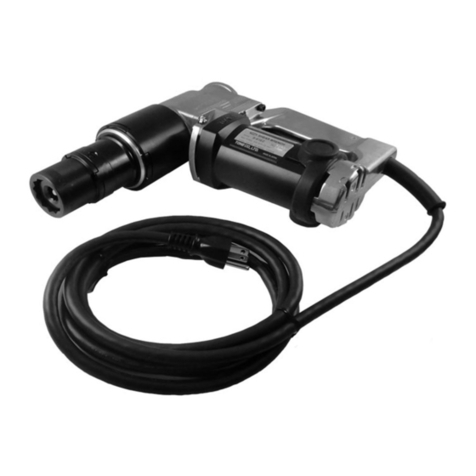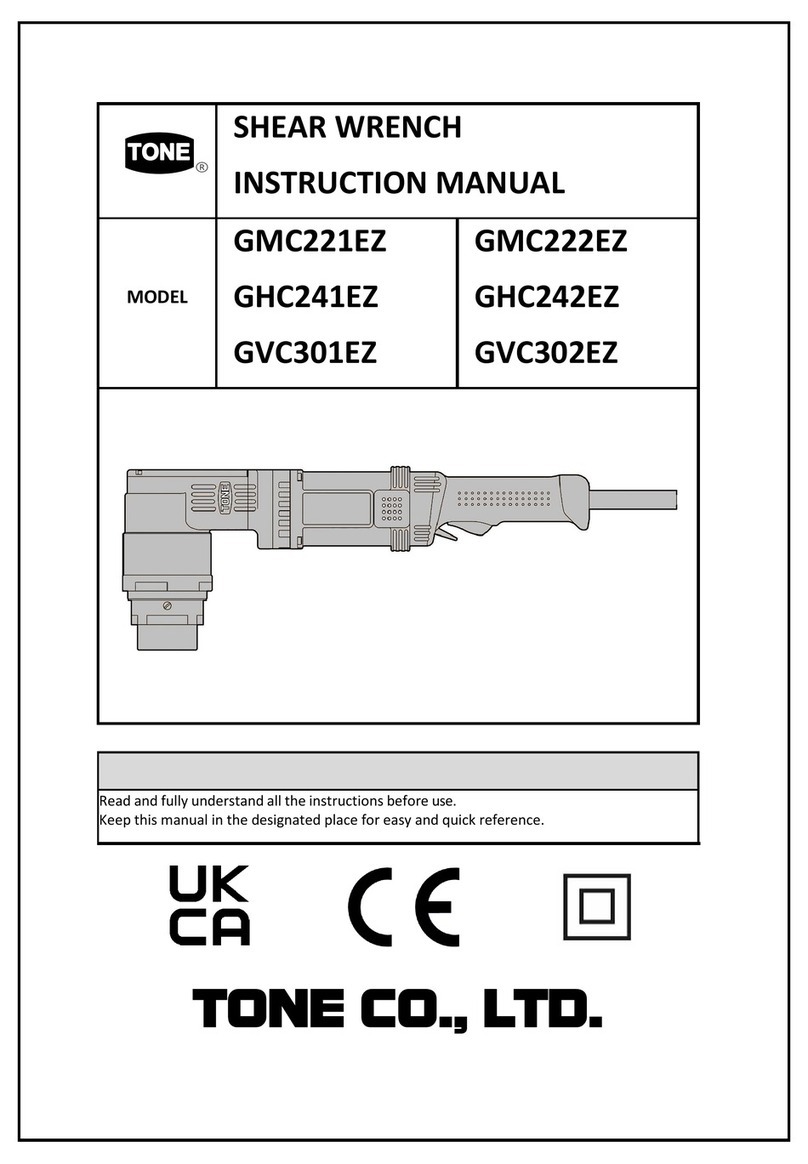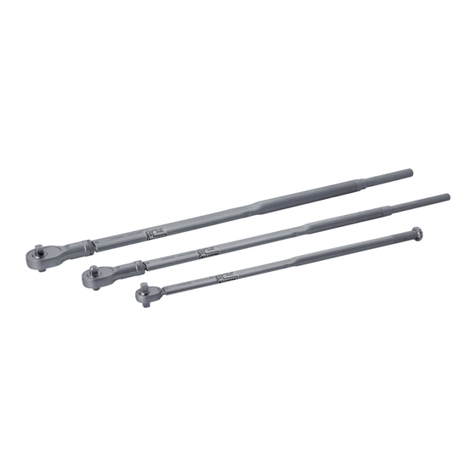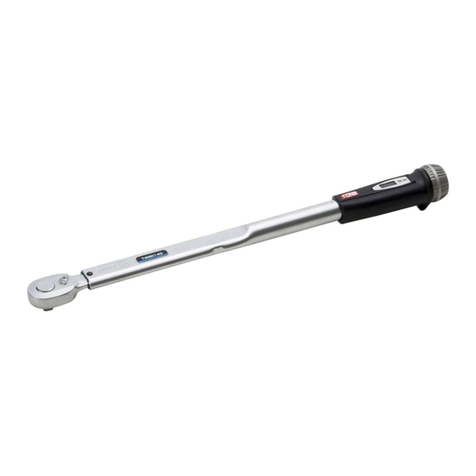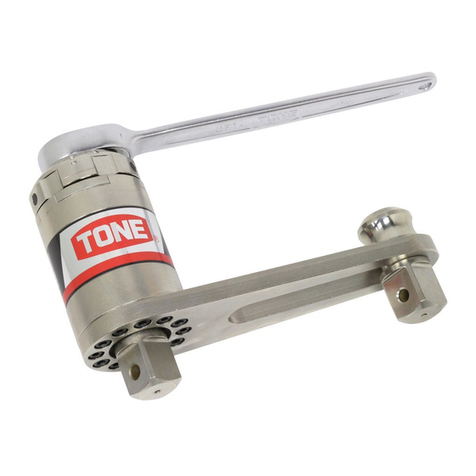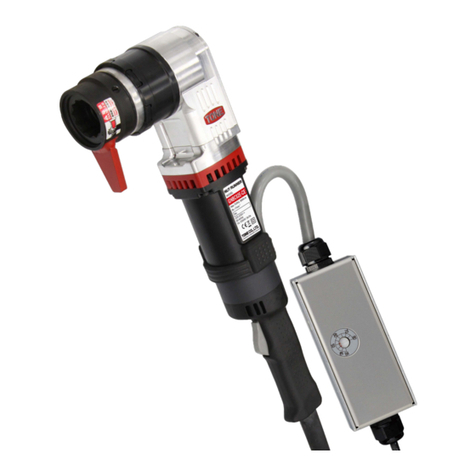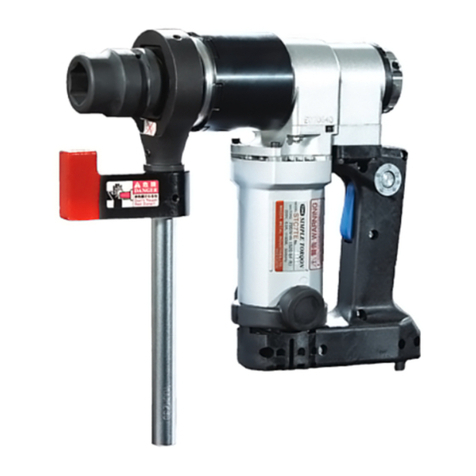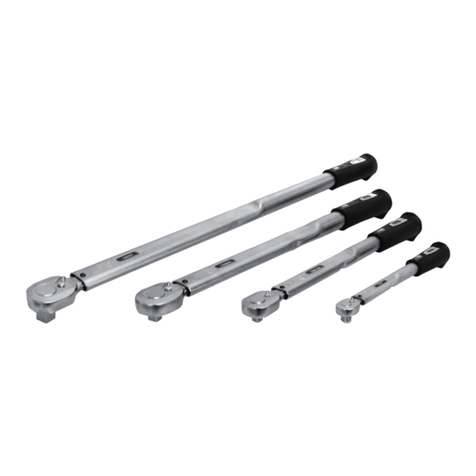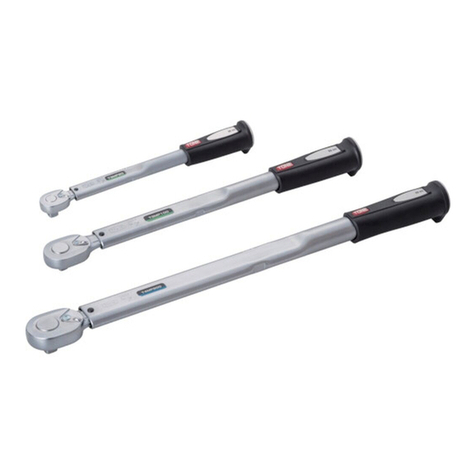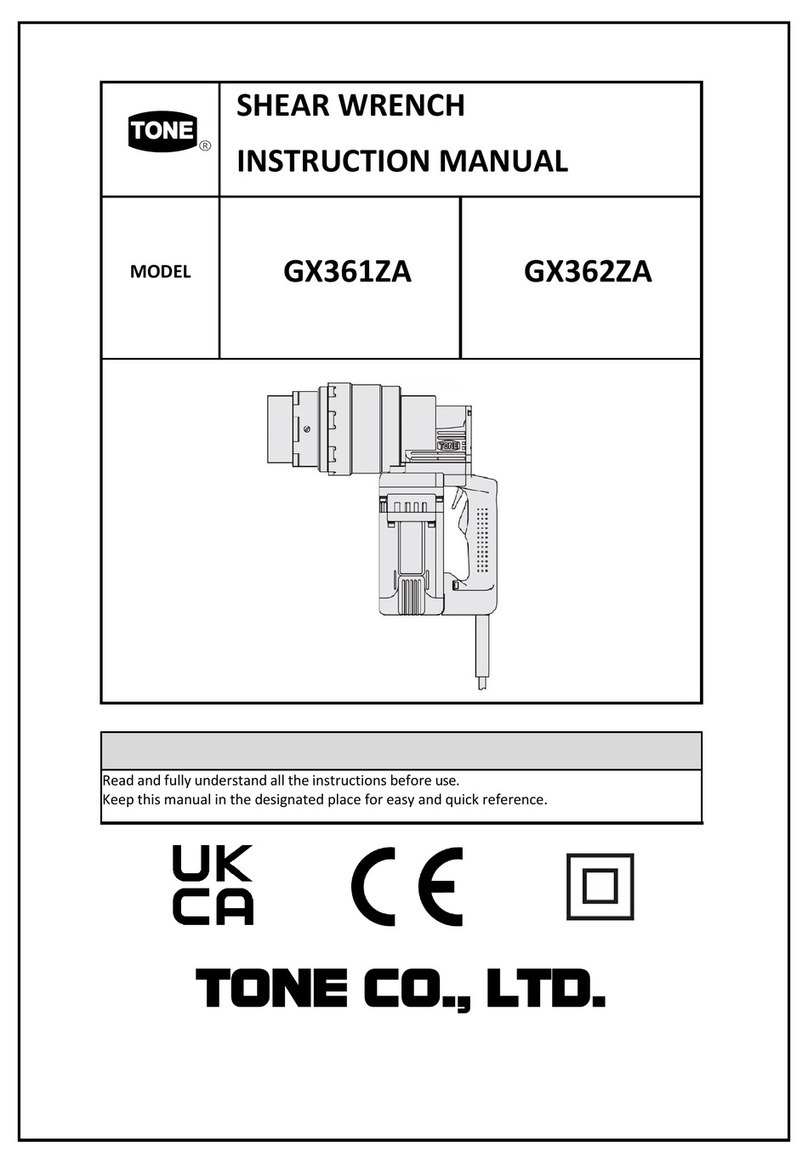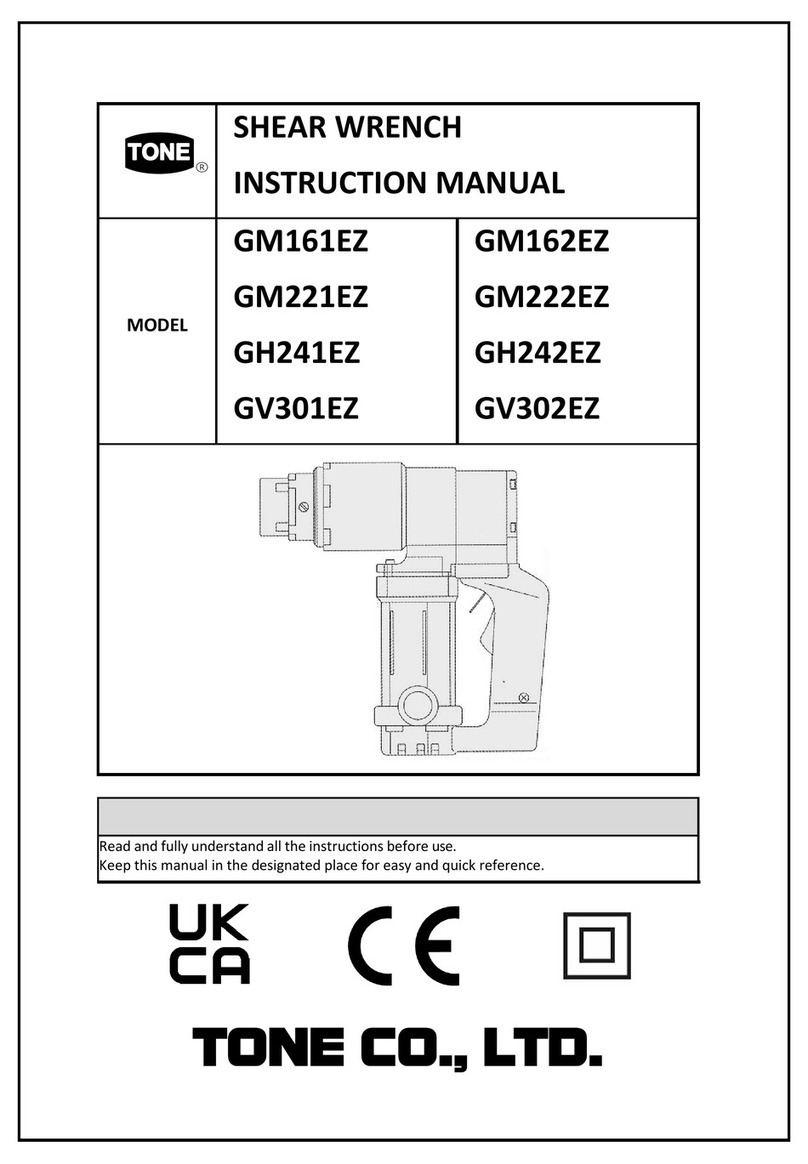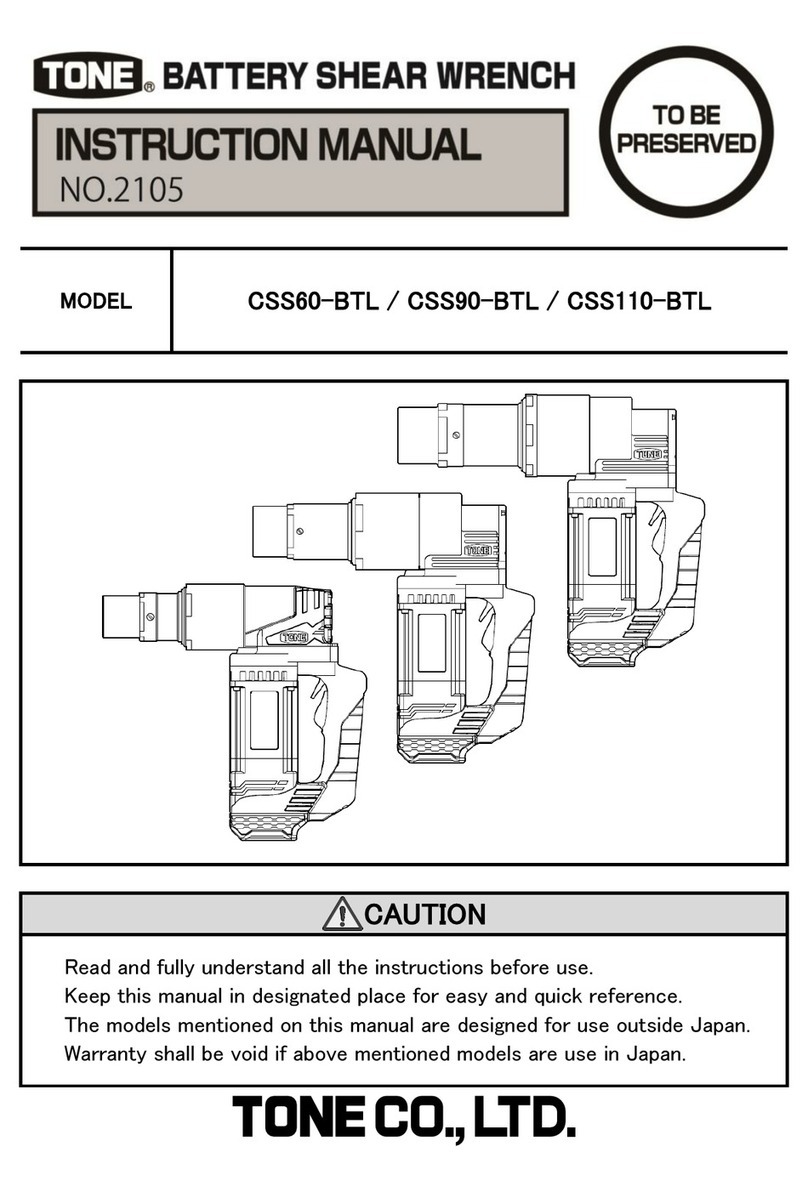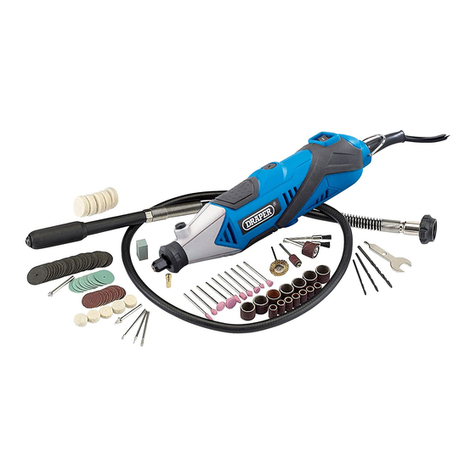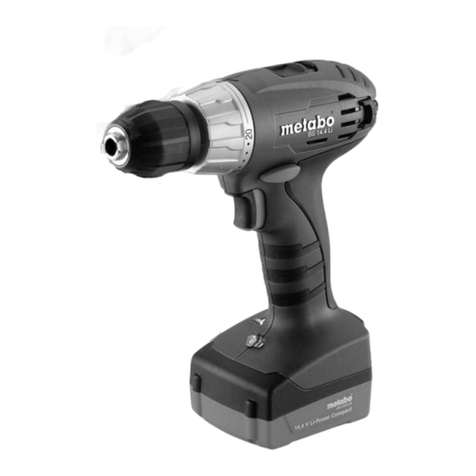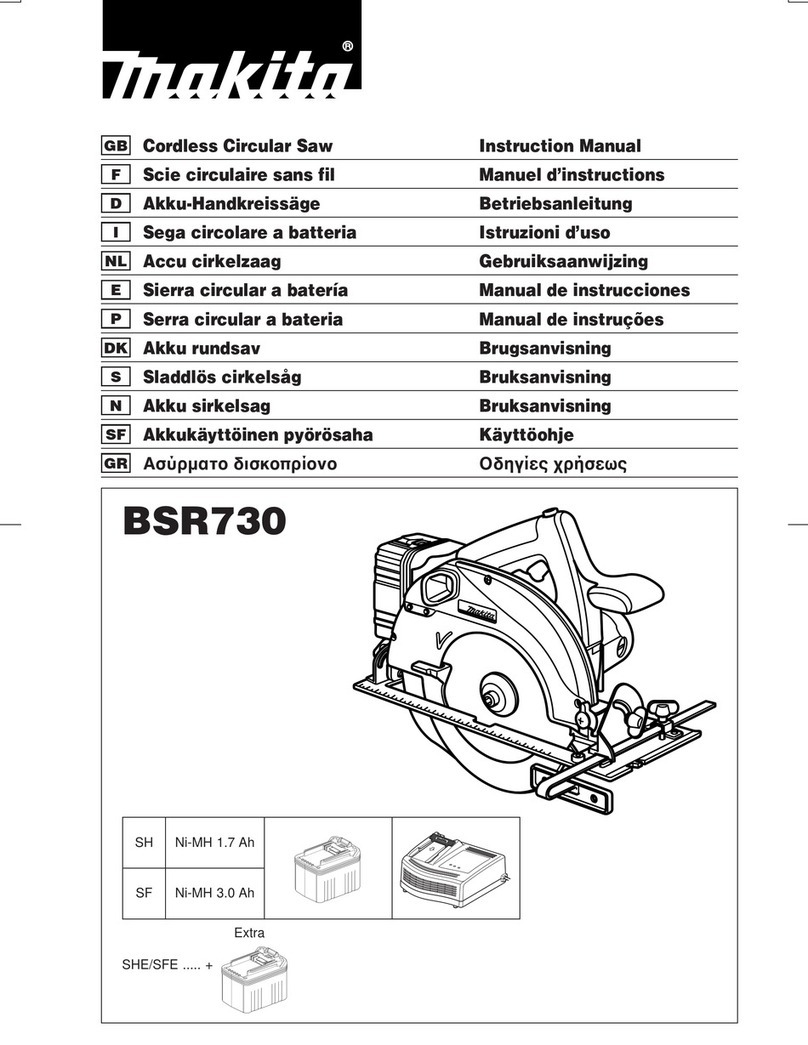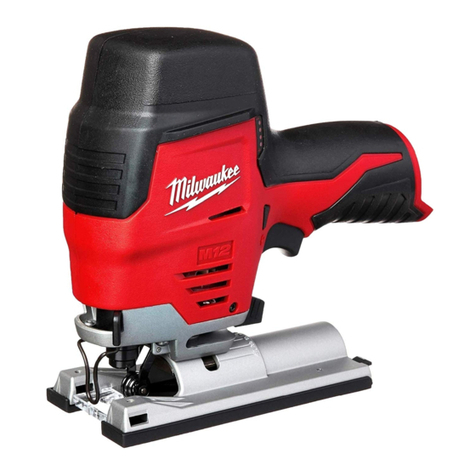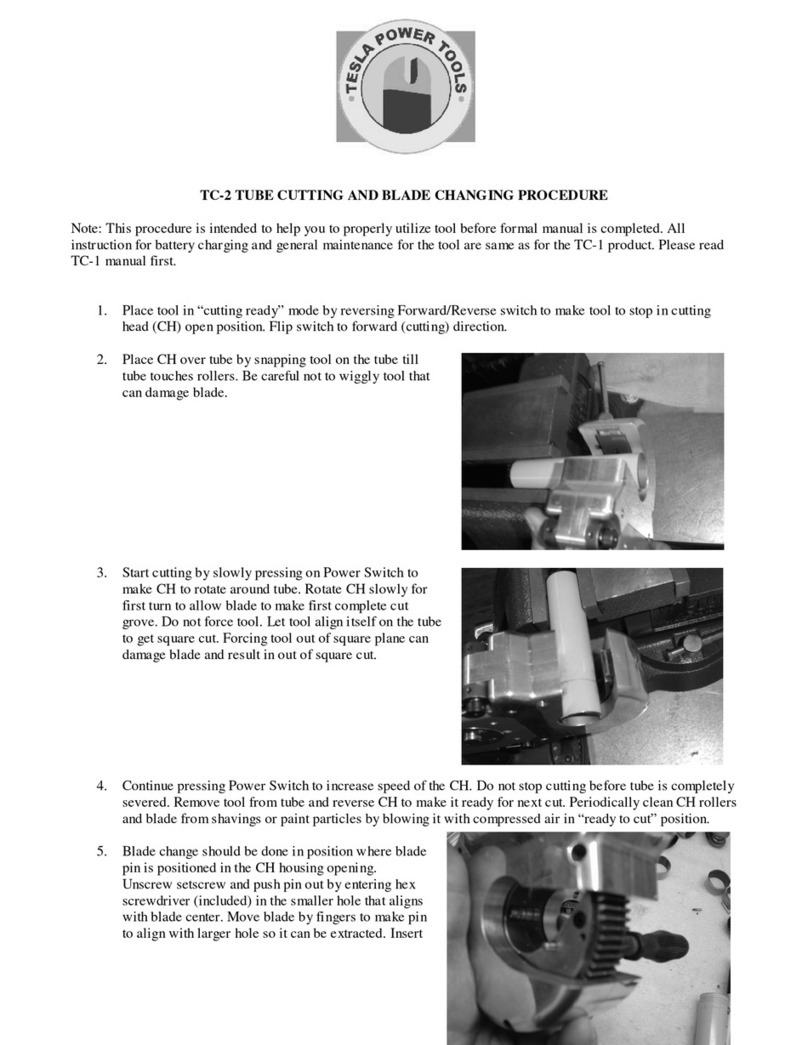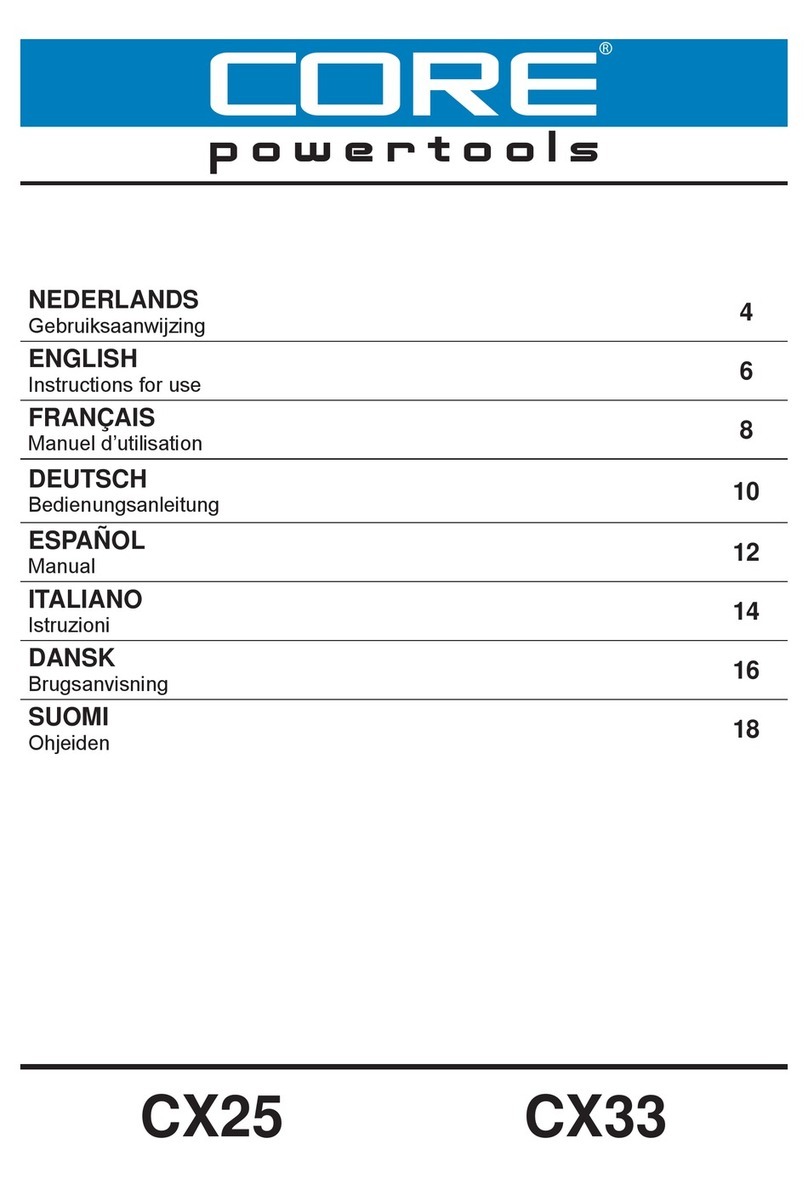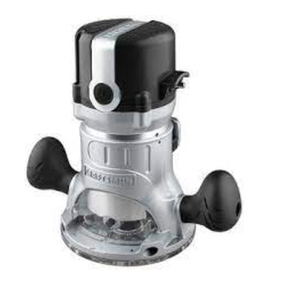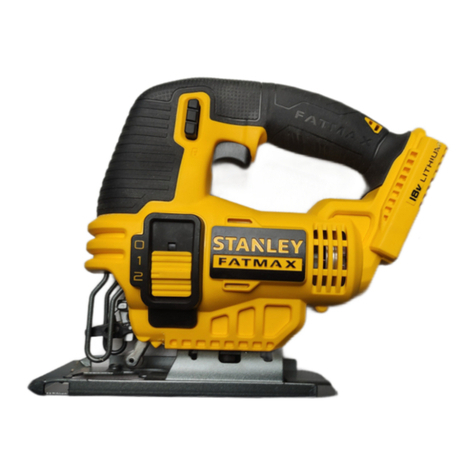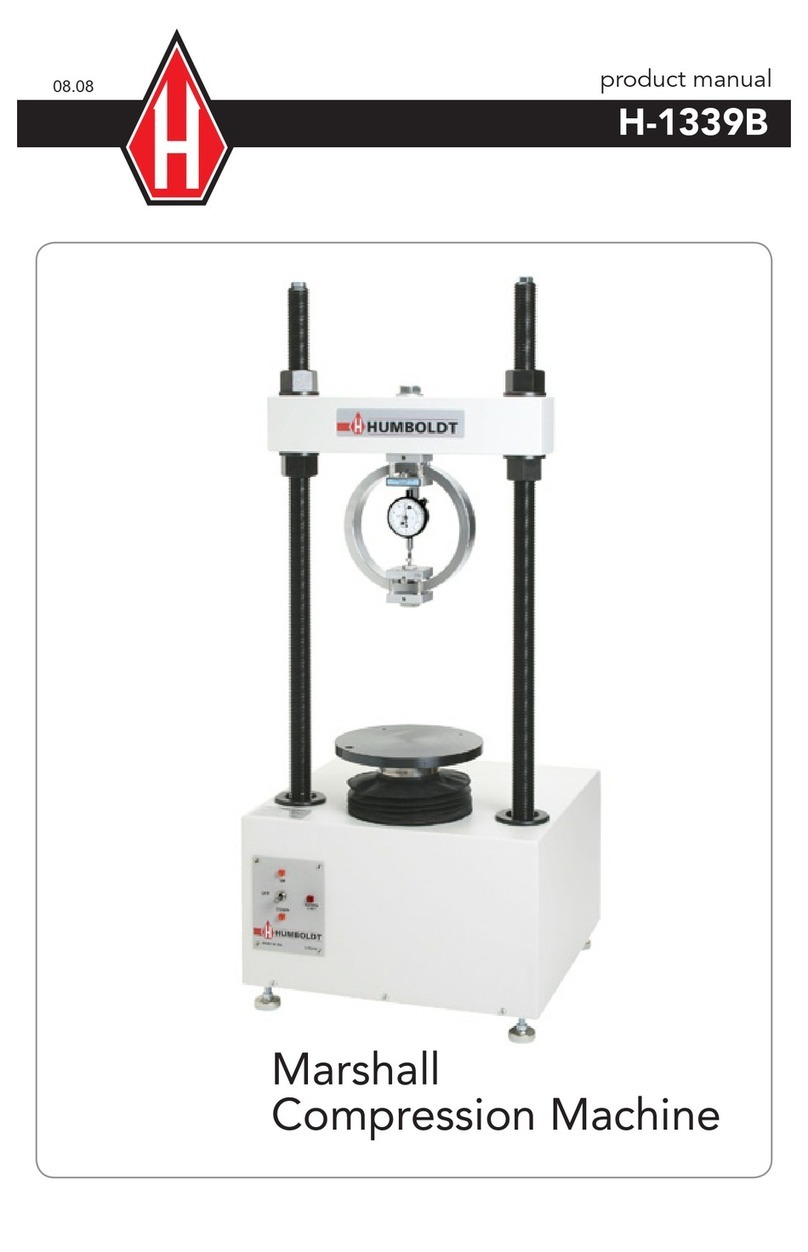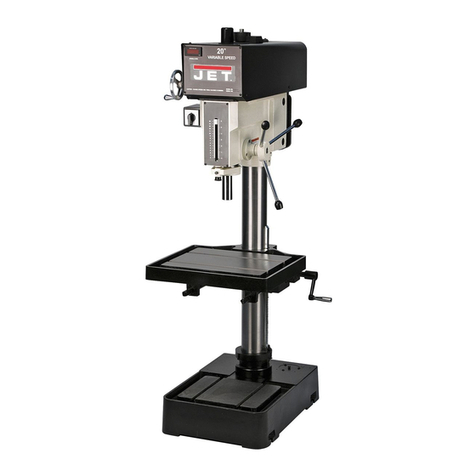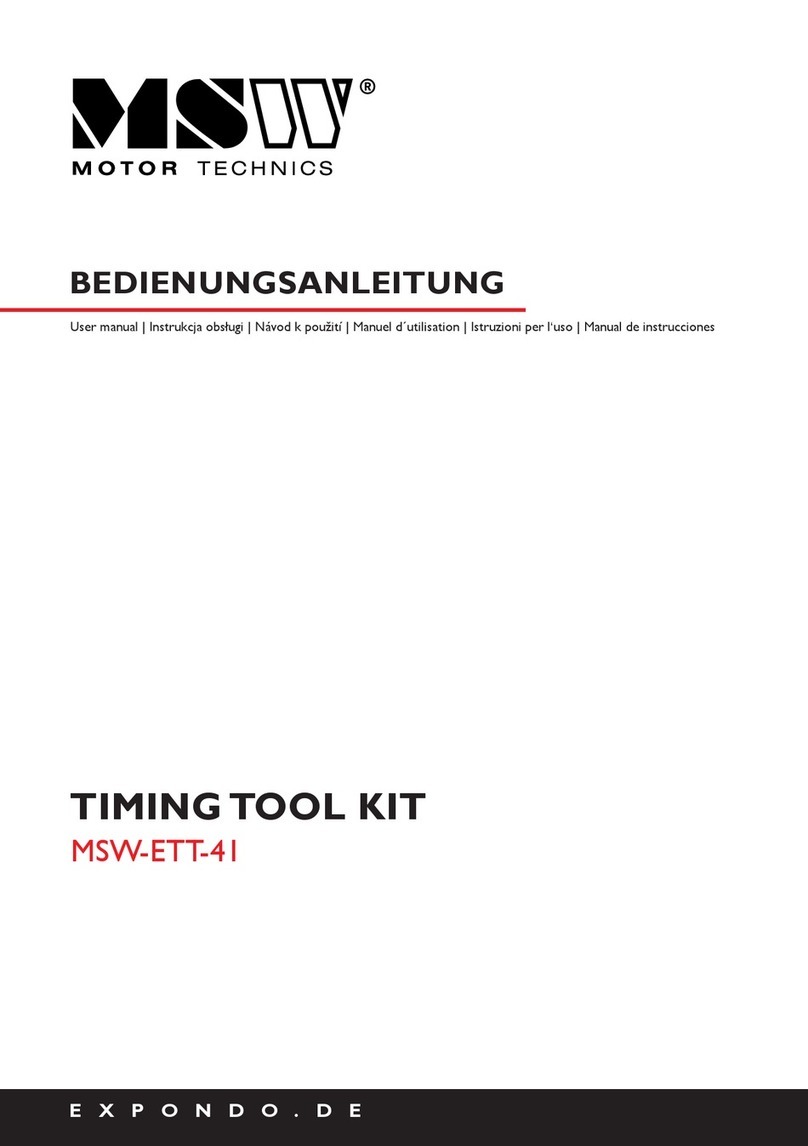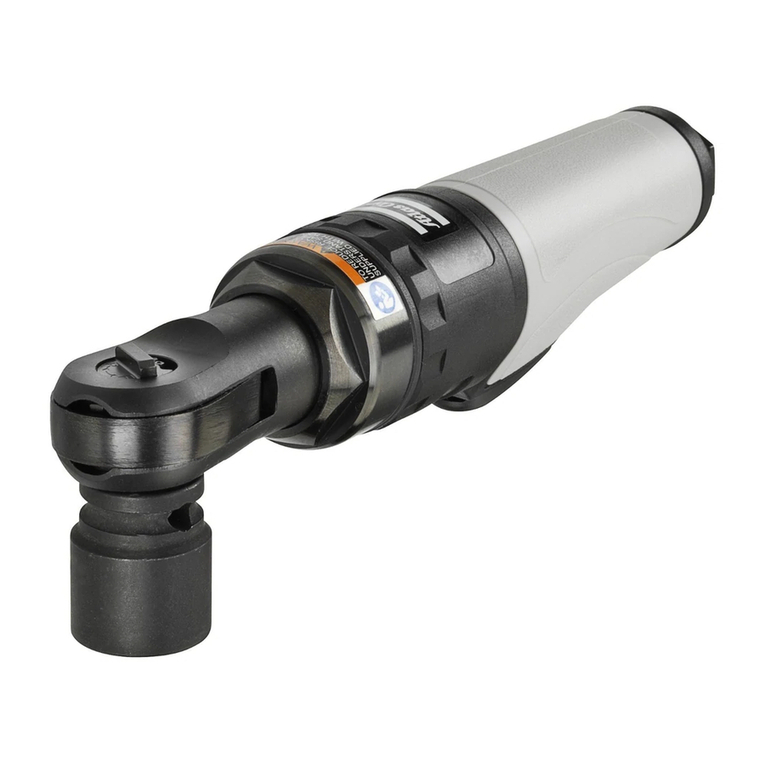Tone CSM160 User manual

CORDLESS SHEAR WRENCH
INSTRUCTION MANUAL
MODEL
CSM160
CSM220
CSH240
Read and fully understand all the instructions before use.
Keep this manual in the designated place for easy and quick reference
.
TONE CO., LTD.

Contents
GENERAL SAFETY INSTRUCTIONS............................................................................................................3
Work area safety................................................................................................................................. 3
Electrical safety ...................................................................................................................................3
Personal safety.................................................................................................................................... 3
Power tool use and care .....................................................................................................................3
Battery tool use and care.................................................................................................................... 4
Service................................................................................................................................................. 4
INTENDED USE ........................................................................................................................................5
SHEAR WRENCH SAFETY WARNINGS......................................................................................................5
PART NAMES AND ACCESSORIES ............................................................................................................ 6
BEFORE USE.............................................................................................................................................7
PRECAUTIONS WHEN USING LITHIUM-ION BATTERIES.......................................................................... 7
Recycling of batteries.......................................................................................................................... 8
INSTALLATION/REMOVAL OF BATTERY PACK.........................................................................................8
REMAINING BATTERERY POWER LEVEL..................................................................................................9
PRECAUTIONS FOR OPERATION............................................................................................................10
Continuous use..................................................................................................................................10
REMOVAL/INSTALLATION OF SOCKETS ................................................................................................10
INSPECTION AND MAINTENANCE.........................................................................................................11
STORAGE OF LITHIUM-ION BATTERIES .................................................................................................11
Fully charge the lithium-ion battery before storing it. .....................................................................12
FAILURE DIAGNOSIS..............................................................................................................................12
Wrench body .................................................................................................................................12
SPECIFICATIONS .................................................................................................................................... 13
EU DECLARATION OF CONFORMITY .....................................................................................................14
UK DECLARATION OF CONFORMANCE .................................................................................................15

GENERAL SAFETY INSTRUCTIONS
When using electric tools, basic safety precautions, including the following, should always be
followed to reduce the risk of fire, electric shock, and personal injury. Read and keep all these
instructions before operating this wrench.
Work area safety
1. Keep the work area clean and well-lit. Cluttered and dark areas invite accidents.
2. Do not operate power tools in explosive atmospheres, such as in the presence of flammable
liquids, gases, or dust. Power tools create sparks that may ignite dust, or fumes.
3. Keep children and bystanders away while operating a power tool. Distractions can cause you to
lose control.
Electrical safety
1. Power tool plugs must match the outlet. Never modify the plug in any way. Do not use any
adapter plugs with earthed (grounded) power tools. Unmodified plugs and matching outlets will
reduce the risk of electric shock.
2. Avoid body contact with earthed or grounded surfaces such as pipes, radiators, ranges, and
refrigerators. There is an increased risk of electric shock if your body is earthed or grounded.
3. Do not expose power tools to rain or wet conditions. Water entering a power tool will increase
the risk of electric shock.
Personal safety
1. Stay alert, watch what you are doing, and use common sense when operating a power tool. Do
not use a power tool while you are tired or under the influence of drugs, alcohol, or medication.
A moment of inattention while operating power tools may result in serious personal injury.
2. Use personal protective equipment. Always wear eye protection. Protective equipment such as
non-skid safety shoes, hard hats, or hearing protection used for appropriate conditions will
reduce personal injuries.
3. Avoid accidental starting. Ensure the switch is in the off position before installing the storage
battery. Carrying power tools with your finger on the switch invites accidents.
4. Remove the slot screwdriver before turning the power tool on. Anything left attached to a
rotating part of the power tool may result in personal injury.
5. Do not overreach. Keep proper footing and balance at all times.
6. This enables better control of the power tool in unexpected situations.
7. Dress properly. Do not wear loose clothing or jewelry. Keep your hair, clothing, and gloves away
from moving parts. Loose clothes, jewelry, or long hair can be caught in moving parts.
8. Do not let familiarity gained from frequent use of tools allow you to become complacent and
ignore tool safety principles. A careless action can cause severe injury within a fraction of a
second.
Power tool use and care
1. Do not force the power tool. Use the correct power tool for your application. The correct power
tool will do the job better and safer at the rate at which it was designed.
2. Do not use the power tool if the switch does not turn on and off. Any power tool that cannot be
controlled with the switch is dangerous and must be repaired.
3. Disconnect the battery pack or plug from the power source before making any adjustments,
changing accessories, or storing power tools. Such preventive safety measures reduce the risk of
starting the power tool accidentally.

4. When not in use, store power tools out of the reach of children and do not allow people
unfamiliar with the power tool or these instructions to operate the power tool. Power tools are
dangerous in the hands of untrained users.
5. Maintain power tools. Check for misalignment or binding of moving parts, breakage of parts, and
any other condition that may affect the power tools operation. If damaged, have the power tool
repaired before use. Many accidents are caused by poorly maintained power tools.
6. Use the power tool, sockets, and accessories in accordance with these instructions and in the
manner intended, taking into account the working conditions and the work to be performed.
Use of the power tool for operations different from intended could result in a hazardous
situation.
Battery tool use and care
1. Recharge only with the charger specified by the manufacturer. A charger that is suitable for the
one type of battery pack may create a risk of fire when used with another battery pack.
2. User power tools only with specifically designed battery packs. Use of any other battery packs
may create a risk of injury and fire.
3. When a battery pack is not in use, keep it away from other metal objects that can make a
connection between terminals. Shorting the battery terminals together may cause burns or fire.
4. If a battery pack is damaged, liquid may leak out which may cause burns or irritation. If contact
accidentally occurs, flush with water. If liquid contacts the eyes, in addition to flushing with
water, seek medical help.
5. Do not use a battery pack if it is damaged. Damaged or modified batteries may exhibit
unpredictable behavior resulting in fire, explosion, and a risk of injury.
6. Do not expose a battery pack to fire or excessive temperature. Exposure to fire or temperatures
above 130°C may cause an explosion.
7. Follow all charging instructions and do not charge the battery pack outside the temperature
range specified in the instructions. Charging improperly or at temperatures outside the specified
range may damage the battery and increase the risk of fire.
8. Charge a battery pack before it is completely discharged
9. Never recharge a fully charged battery pack.
10. Charge battery packs at room temperature (10°C to 40°C). Let hot battery packs cool down
before charging.
11. Charge a battery pack if it is not to be used for a long period (typically more than six months).
Service
1. Have your power tool serviced by a qualified repair person using only identical replacement
parts. This will ensure that the safety of the power tool is maintained.
2. Never service damaged battery packs . Service of battery packs should only be performed by
the manufacturer or authorised service providers.

INTENDED USE
The TONE shear wrench (corded or cordless) is an electric tool for tightening Tension Control Bolt
bolting assemblies.
SHEAR WRENCH SAFETY WARNINGS
1. Beware of electric shocks. Never use a shear wrench in wet weather conditions.
2. Ensure sockets are fitted correctly with all the appropriate accessories.
3. Avoid accidental starting when carrying a shear wrench.
4. Do not disassemble shear wrenches. Disassembly or modification by unauthorized personnel may
result in a malfunction or injury.
5. Disassembly does not include sockets, inner socket spring, ejector pin, ejector pin spring or battery
pack.
6. Stop using the shear wrench if unusual sound, vibration or smell is detected.
7. Each day before using a shear wrench, check for any damage or cracks, check the condition of power
cable or battery pack.
8. Check the shear wrench for damage if it is dropped. Stop using the shear wrench if unusual sound,
vibration or smell is detected.
9. Keep shear wrench in a clean condition.

PART NAMES AND ACCESSORIES
Accessories
MODEL
WORKING PARTS AND ACCESSORIES
CSM160-BTL
CSM200-BTL
CSM220-BTL
CSH240-BTL
Inner Socket Outer Socket
Inner Socket Spring
Ejector Pin
Ejector Spring Screwdriver (-) Metal Case
Instruction Manual
•Contact your distributor for long sockets or accessories.

BEFORE USE
1. Check for any deformation, crack or damage on the shear wrench body, socket, storage battery,
charger, parts, etc.
2. Do not use the wrench if any problem is found.
3. Please check the power supply. Only use the power supply indicated on the nameplate of the
charger.
4. Select the correct sockets according to the size of the bolt assembly to be tightened.
5. Ensure that the socket assembly is correctly installed on the wrench. Ensure that set screws are
securely fastened as any loosely installed sockets may result in accidents and personal injury.
6. See “Installation of Sockets”.
PRECAUTIONS WHEN USING LITHIUM-ION BATTERIES
1. While using this wrench, the motor may stop in the following cases even if the switch is
operated. This is due to the protection function and is not a malfunction.
2. The motor will stop when the battery level is low. In this case, charge the battery immediately.
3. If the wrench body becomes overloaded, the motor may stop. In this case, press and release the
switch once to eliminate the cause of the overload.
4. If the battery becomes overheated, the motor may stop. In this case, stop using the wrench,
remove the battery from the wrench body, and cool it sufficiently in a well-ventilated area.Then
it can re-used.
5. In addition, be sure to observe the precautions below to prevent leakage, heat generation,
smoke, and ignition of the battery.
6. Do not charge the battery outside the operating temperature range of the charger. Not only will
it not be charged properly, but the life of the battery will be shortened. In addition, there is a risk
of explosion and fire.
7. Do not cover the battery or charger with a cloth while charging. There is a risk of explosion or fire.
8. Charge the battery in a well-ventilated place.
9. Do not store the wrench body or storage battery in a place where the temperature may rise
above 50℃(such as in a metal box or in a car in summer).
10. It may cause deterioration of the storage battery and may cause smoke or fire.

Recycling of batteries
Batteries are a valuable recyclable resource. When disposing of storage
batteries or products, please co-operate with recycling and take them to
a recycling center or recycling scheme.
INSTALLATION/REMOVAL OF BATTERY PACK
When removing the battery pack from the wrench body, press the latches on both sides and slide the
battery pack out.
When attaching a battery pack to the wrench body, align the grooves on the battery pack with the
grooves on the wrench body and insert completely until you hear a click.

REMAINING BATTERERY POWER LEVEL
Batteries have a fitted power level indication system.
•Press the check button and the indicator lamps
show the battery pack’s remaining power level.
•The indicator lamps turn off about 3 seconds after
pressing the battery level indicator button.
•The power level display may differ to actual power
level depending on the usage environment, battery
characteristics, etc.
•In addition, the power level may differ from the
charger side that has the battery power display
function.
※1: Remove the storage battery from the wrench and let it cool down sufficiently.
※2. The storage battery may be out of order, so please contact the distributor where you purchased
the product.

PRECAUTIONS FOR OPERATION
Continuous use.
1. Cordless shear wrenches are equipped with a temperature protection circuit to protect the
motor and the electronic components that control the drive of the motor.
2. If the wrench is used continuously and the temperature of the motor rises, the temperature
protection circuit may activate. This stops the wrench operating automatically.
3. If this occurs, allow the wrench to cool so the temperature drops. It can then be used again
when sufficiently cooled.
4. Additionally, when working a wrench continuously, it is advisable to stop using the tool for about
15 minutes to allow it to cool down before a new battery pack is installed.
REMOVAL/INSTALLATION OF SOCKETS
Remove inner & outer socket assembly from
wrench by unscrewing set screws (as below).
Do not remove set screws completely from
outer socket holder.
To separate the inner socket from outer socket,
push the projecting pin using a screwdriver or TC
bolt.
The two sockets part allowing them to be
cleaned and/or replaced.
To re-join the inner and outer sockets, place the
inner socket vertically onto a flat surface then
slide the outer socket over the inner socket.
They may not fully fit together so push the
projecting pin on the inner socket down using a
screwdriver or a complete TC bolt. The outer
socket will be appropriately assembled.
Set inner & outer socket assembly to the wrench
body and completely remove the gap between
socket assembly and wrench body. The gap can
be removed by turning & pushing down
screwdriver or TC bolt into the inner socket.
* Fasten the set screws only after gap is
completely removed.

INSPECTION AND MAINTENANCE
1. Turn off the switch and remove the storage battery from the wrench. Also, remove the power
plug from the outlet of the charger before inspection and maintenance.
2. Replace the inner socket when sheared bolt spline falls out of the inner socket without pulling
the ejector lever.
3. There is a risk of unexpected bolt spline ejection when inner drive of the inner socket is worn down.
The inner socket should be replaced.
4. Check the battery pack terminals for dirt.
5. Clean dust and dirt from the sockets periodically.
6. Use only a dry cloth to clean your wrench and sockets since organic solvents such as benzene,
thinner and gasoline may cause cracks or discoloration to parts.
7. Do not allow oil and organic solvents to enter the motor.
8. Store wrench in the original metal case and keep it dry.
9. Ejector pin must be regularly inspected and replaced when it wears down. A sheared bolt spline
will not be ejected from inner socket with worn ejector pin.
10. A service to be carried out every 6 months or 30,000 bolt installations, whichever comes first.
Contact your distributor for service.
STORAGE OF LITHIUM-ION BATTERIES
When transporting lithium-ion batteries, please heed the following points.
Do not short the battery pack:
a. Do not touch the terminals with any conductive material.
b. Avoid storing the battery pack in a container with other metal objects such as bolts, washers etc.
c. Never expose the battery pack to water or rain.
To prevent shorting from occurring, load the battery in the wrench body or correctly insert a battery cover
securely over the terminals.

Fully charge the lithium-ion battery before storing it.
If a battery pack is stored for a long time (3 months or more) with low remaining capacity, the
storage battery may deteriorate, the usage time may be significantly shortened, or the battery may
not work when charged. However, if battery pack’s usage time is significantly reduced, it may be
restored by repeating charging and use 2 to 5 times. If the usage time is extremely short even after
repeated charging and use, it may indicate the end of the battery life, and it is recommended to
purchase a new battery.
FAILURE DIAGNOSIS
If "Failure diagnosis" does not work, please contact the distributor where you purchased the
product.
Also, faults may be caused by the storage battery, so ensure the charger and battery pack are also
sent with the wrench.
Wrench body
Failure symptoms
Cause
Remedy
Pulling
the switch does not start
Battery
is low
Battery packs needs to be
charged
.
Wrench
shutdown
Battery
is low
Battery packs needs to be
charged.
Overloaded
during tightening
The motor will automatically stop
if
the wrench is overloaded.
Check the tightening status and
eliminate the cause of overload.
The battery pack or wrench body
has become overheated
Cool down the battery pack and
the wrench body
sufficiently.
Battery
cannot be installed.
The battery pack is not the
specified
one.
Use a specified multi-volt storage
battery.

SPECIFICATIONS
Wrench Body
Model Motor Storage Battery
No-load rpm Weight
(min-
1
)
(kg)
CSM160-BTL
DC brushless
motor DC 36V
25 3.6
CSM220-BTL 17 4.5
CSH240-BTL 8 5.9
•Weight excludes sockets.
Model
Bolt Dimensions(mm)
TC Bolt Gear Diameter Length × Height × Width
CSM160-BTL M12, M16 φ58 218×278×90
CSM220-BTL M16, M20, M22 φ75 241×287×90
CSH240-BTL M22, M24 φ85 262×301×90
Model Approximate number of tightening per full-charged battery (4.0Ah)
CSM160-BTL 400pcs when tightening M16 TCB assemblies.
CSM220-BTL 200pcs when tightening M22 TCB assemblies.
CSH240-BTL 160pcs when tightening M24 TCB assemblies.

EU DECLARATION OF CONFORMITY
We hereby declare that the following products conform to the essential health and safety
requirements of EU Directives.
Product
CORDLESS SHEAR WRENCH (Battery operated tools)
Model No.
CSM160-BTL
CSM220-BTL
CSH240-BTL

UK DECLARATION OF CONFORMANCE
We hereby declare that the following products conform to the essential health and safety
requirements of UK Regulations.
Product
CORDLESS SHEAR WRENCH (Battery operated tools)
Model No.
CSM160-BTL
CSM220-BTL
CSH240-BTL

This manual suits for next models
2
Table of contents
Other Tone Power Tools manuals
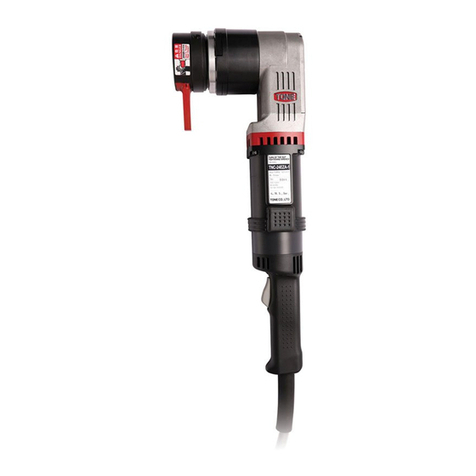
Tone
Tone TNC-24EZA-1 User manual
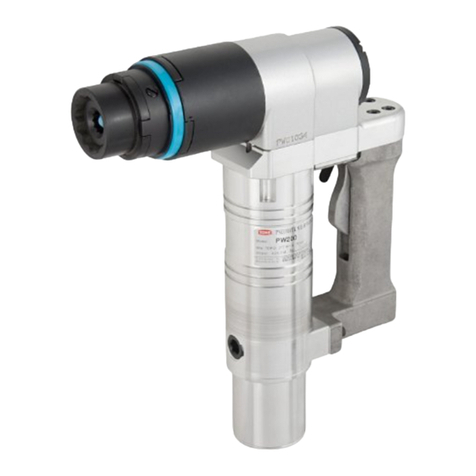
Tone
Tone PW200 User manual
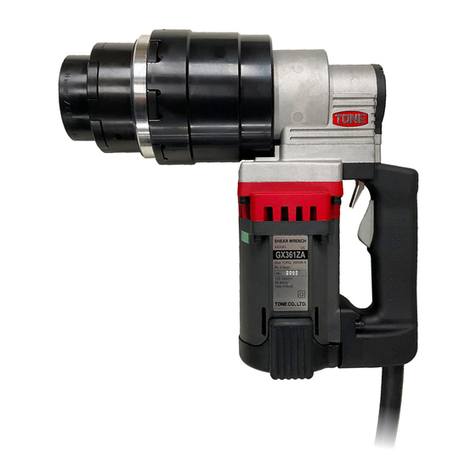
Tone
Tone GX361ZA-UC User manual

Tone
Tone US-221EZ User manual
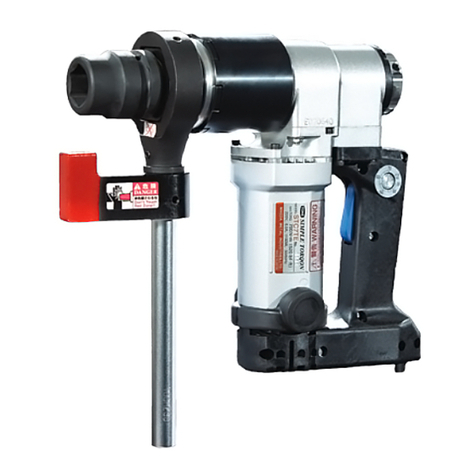
Tone
Tone SIMPLE TORQON XT-STC7TE User manual
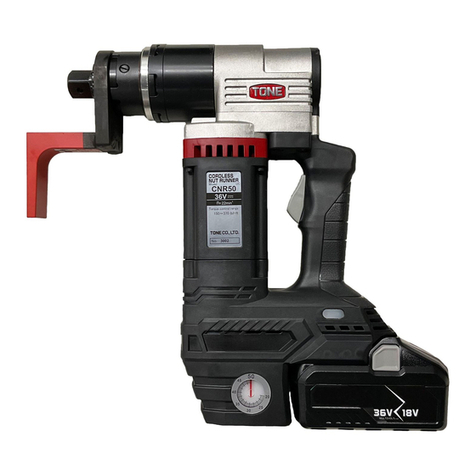
Tone
Tone CNR Series User manual
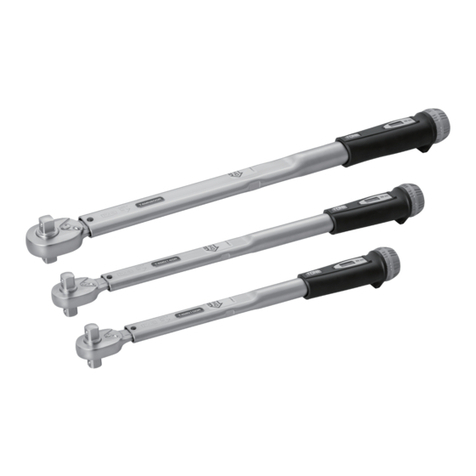
Tone
Tone 1607 User manual
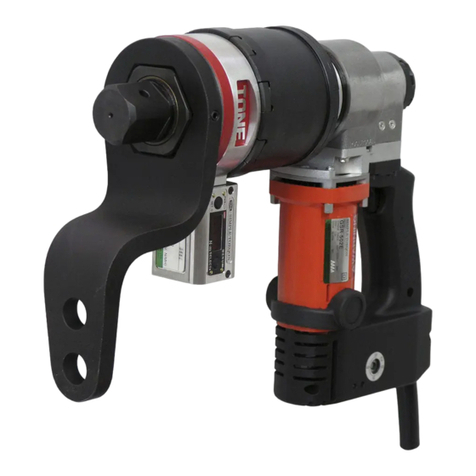
Tone
Tone Power Digitorqon PDX-302N User manual

Tone
Tone GPTN241E-UC User manual
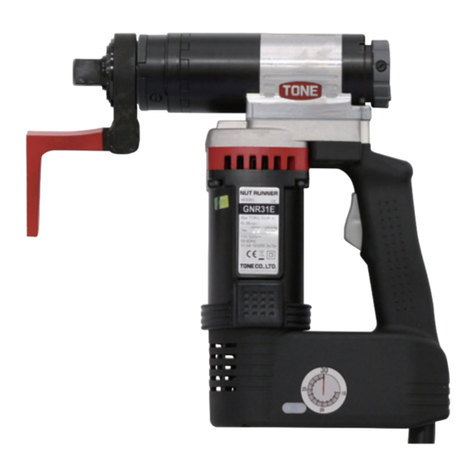
Tone
Tone GNR31E-UC User manual
